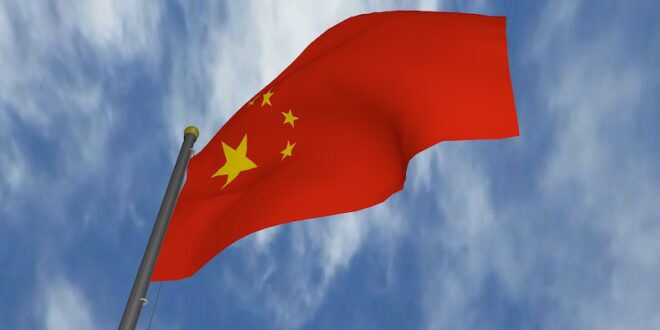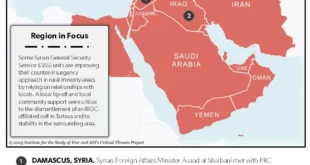The arrangement of Chinese President Xi Jinping’s recent visit to three European countries, namely France, Serbia, and Hungary appears to be meticulously planned. Within the G7 group, France is often seen as a member who goes its own way. On the other hand, in the European Union, Hungary has been regarded as the most independent-minded member since 2010, while Serbia has been criticized by the U.S. and Europe for its long-standing pro-Russia and pro-China stance. It is of little wonder that regarding Xi’s visit to Europe, Western public opinion generally believes that the purpose is to divide the West.
Since the outbreak of the COVID-19 pandemic, global supply chains have been disrupted, and inflationary pressures have surged. The outbreak of the Russia-Ukraine conflict has further exacerbated the chaos in the global supply chain, with inflation levels increasing rather than decreasing. Against this backdrop, the U.S. has launched the Inflation Reduction Act to attract global capital, leading to a large number of companies from Europe, Japan, and South Korea relocating to the U.S. This directly undermines the industrial systems of the American allies and has provoked criticism and protests from many countries. The gradual escalation of U.S. technology blockades and suppression against China has also affected the performance and prospects of major chip industry giants such as ASML, triggering much discontent. Moreover, based on previous events especially the PRISM program, the leakage of classified U.S. intelligence two years ago further demonstrated U.S. surveillance activities against its allies in Europe and Asia. This not only indicates a lack of trust from the U.S. towards its many allies but also shows that there are significant contradictions within the West in various areas including politics, economy, and military.
In recent years, some from China’s strategic and academic circles have repeatedly stated that they should exploit the many contradictions within the West and extend olive branches to U.S. allies in Europe and Asia with practical economic and political benefits while striving to disrupt or even dissolve its global alliance system to improve China’s international strategic environment. Some Chinese commentators believe that based on realist considerations, these countries will not blindly follow the U.S. but will gradually show distance based on actual interests, especially from an economic perspective. China itself has attempted to divide the West. From Chinese diplomat Wang Yi’s visit to the European Union two years ago to the upcoming visit of Dutch Prime Minister Mark Rutte to China last year, China has been attempting to create distance between the U.S. and its major allies through economic and security affairs. The differences in positions among Western countries also seem to provide room for maneuver. However, researchers at ANBOUND believe that considering factors such as the stages of civilization, historical memories, and economic factors, within the West, the U.S. has extremely strong cohesion with its allies, which is almost impossible to shake, let alone divide.
Firstly, the fundamental basis of the cohesion of the United States lies in the shared stages of civilization. According to the Four Stages of Civilization model proposed by ANBOUND’s founder Kung Chan, the West, as well as Japan, belong to the “stable” stage. They generally adhere to the core elements of modern civilization such as liberal democracy, market economy, and rule of law, and are closely interconnected in terms of economy, finance, and technology. Therefore, in international affairs, the overall coordination among Western countries is the highest. With the outbreak of the Russia-Ukraine conflict, under the leadership of the U.S., Western European countries gradually joined in imposing sanctions on Russia, even voluntarily cutting off the most important natural gas imports.
The similarity in stages of civilization reinforces the internal cohesion among Western countries. Even in the face of the prospect of Donald Trump returning to office, Western European countries are not prepared to make peace with Russia separately. In the Asia-Pacific region, Japan and South Korea have also actively participated in the construction of regional alliance systems, filling the strategic space left by the U.S. as it prepares to retract, in order to continue containing China.
Although populist forces are prominent within the West, the people in the West in general have not shown a desire to completely abandon liberal democracy. Often, support for populist movements arises primarily from dissatisfaction with the establishment rather than a genuine desire for an alternative political system. Their demands often become more significant only when compared to those of others. One of the main arguments maintained by the U.S. and other Western countries for supporting Ukraine is to uphold Ukraine’s liberal democracy. Despite the many flaws and oligarchic tendencies within this democratic system, standing against Ukraine is Russia, which is undeniably an authoritarian regime that poses a direct threat to liberal democracy. According to a previous survey by the European Council on Foreign Relations (ECFR), over 30% of the populations in France and Germany consider China to be a competitor or even a threat to Europe. Meanwhile, 41% of Europeans believe that Chinese military assistance to Russia would be a red line, and if crossed, stronger punitive measures against China must be enforced. The similarity in stages of civilization and their institutional commonalities serve as powerful adhesive forces, tightly binding Western countries around the U.S.
Secondly, in terms of historical memory, the U.S. has always been seen as a savior-figure of the entire Western world at critical historical junctures. In the historical education and propaganda of relevant countries, June 1944 marks the landing of Allied forces led by American General Dwight D. Eisenhower in Normandy, liberating not only the French but also the Dutch, Belgians, Danes, Norwegians, Italians, and even Germans as mentioned in some German history narratives from the hands of the Nazis after immense sacrifices. In 1947, Secretary of State George C. Marshall, at great expense, provided interest-free loans to various Western European countries including West Germany, enabling them to escape chaos and poverty. From 1948 to 1949, when the Russians blockaded supplies to West Berlin, the U.S. dispatched an unprecedentedly large airlift at great cost to supply the entire population of Berlin. In September 1950, when South Korea was on the verge of collapse under pressure from the North Korean army, it was the U.S. that landed at Incheon to save them.
In today’s Eastern European countries, whether it’s Poland, Czech Republic, Slovakia, Hungary, Romania, Greece, Bulgaria, or the Baltic States Lithuania, Latvia, Finland, and Estonia, they all regard the U.S. as the savior that helped them break free from Soviet rule during the Cold War. As Poland’s first president after the Cold War, Lech Wałęsa, put it, “People could really count on the United States to come to the rescue”. The U.S. security protection and economic support for Europe contributed to Europe’s economic take-off, while the Soviet Union heavily intervened and exploited its Eastern European allies after the war. Therefore, during the 1970s to 1980s, when the U.S. was at its weakest, its Western allies instead closely followed the U.S. When the Soviet Union showed signs of decline in 1985, its allies began to gradually distance themselves and eventually abandoned the Soviet Union. The leadership of the U.S. over the Western world lies not only in its economic, technological, and security advantages but also in a subtle yet powerful ideology.
Furthermore, in terms of tangible economic interests, the competitive and confrontational aspects of the West towards China are equally significant and cannot be underestimated. When China initially integrated into the international division of production, its main advantages were cheap labor and a massive domestic market, which complemented the West to a great extent. However, at present, with the upgrading and transformation of industrial structure, China’s competitive displacement effect on the West is becoming increasingly apparent. For example, in the field of electric vehicles, China holds certain advantages across the entire industry chain from raw materials to finished products. This has significantly altered the future landscape of the automotive industry and has impacted the industrial position of European and American manufacturers, especially the former, to a considerable extent.
Previously, due to issues such as the origin of the novel coronavirus, China imposed trade sanctions on Australia. Without shared ideological consciousness and historical memory factors, such actions would only cause extremely negative interpretations on the Australian side. Therefore, even though China has fully restored imports of critical resources such as coal, timber, and even wine from Australia, the latter has never toned down its hostile actions towards China and has always been diversifying its own economic and trade structure to reduce dependence on China. Australian politicians have been continuously ramping up demands for further trade restoration. Meanwhile, China’s industrial layout in regions like Africa and South America poses a clear threat to the global industrial chain of the West, which is also a common target of Western resistance. Therefore, whether it is the confrontational nature of actual economic interests or political confrontations filtering into the economic domain, it implies that China will find it difficult to use actual economic interests as a leverage point to fragment the West.
Economic differences between the U.S. and its allies can be effectively compensated for by the economic advantages of the U.S. itself. The demand in the Chinese market once made ASML hesitant about sanction policies, but the sales revenue of advanced 2-nanometer lithography machines to the U.S. effectively offset the sales losses of 7-nanometer lithography machines in the Chinese market. In terms of economic disputes, even if there are disputes and differences, allied companies can often gain certain benefits despite losses incurred by others.
Xi’s visit to Europe has achieved a series of political and economic outcomes. However, Western media points out that Serbia plays only a marginalized role in Europe, while Hungary is merely a second-tier country within the European Union. What needs to be noted more is that the ruling party in Hungary lost power in the capital region in 2019 and is currently facing increasing social pressure from the public, indicating that a change in government is not out of the question, similar to what happened in Poland. Although France has signed a series of cooperation agreements with China, substantive breakthroughs have been made in the negotiations of the reciprocal troops pact between France and Japan. This suggests that the possibility of France’s military strength being pushed to the forefront of confrontation with China is greatly enhanced, which undoubtedly holds greater significance than economic and educational cooperation.
Final analysis conclusion:
Considering factors such as the stage of civilization, historical memory, and actual economic interests, the U.S. maintains a strong cohesion within the Western camp. The likelihood of successful fragmentation and division of the West by another force is rather limited. Similarly, the strategy of relying on economic interests and other factors to gradually shift the U.S. allies in Europe and Asia away from such an alliance is also unlikely to yield significant results.
 Eurasia Press & News
Eurasia Press & News



